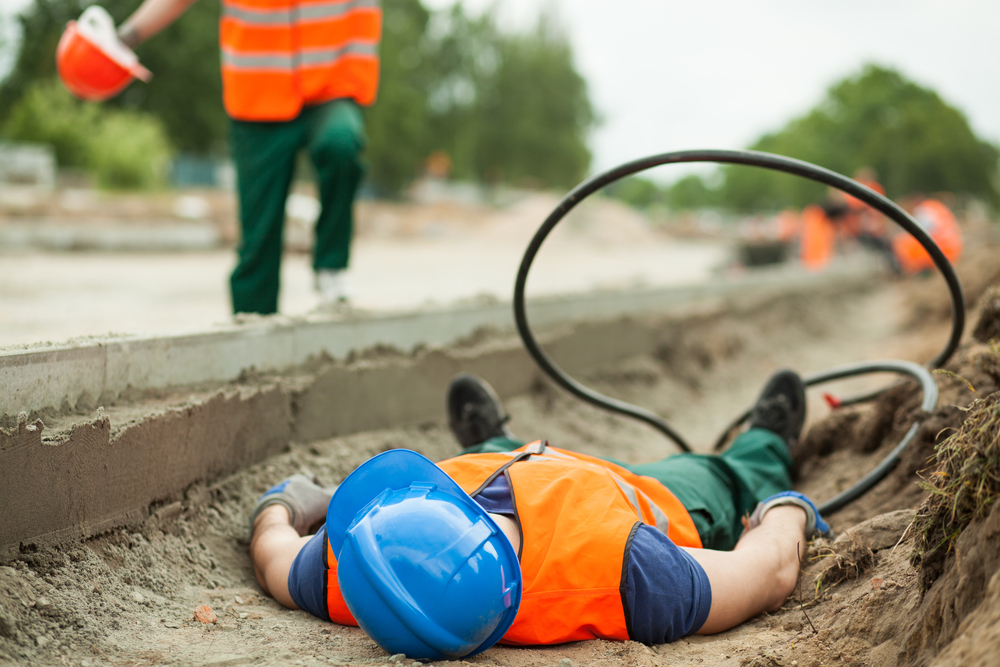The construction sector is fraught with danger. The potential for catastrophic and even fatal injuries is there in each endeavor, no matter how big or little. Work in the construction industry is notoriously tricky. Rapid changes in the work environment need the frequent movement of heavy machinery, tools, supplies, and waste. A project’s completion may require the combined efforts of many independent contractors or subcontractors whose respective clients have varying standards for employee training and line of communication.
For this reason, construction accidents account for a disproportionate share of all occupational deaths. While many people have heard that construction is one of the most dangerous professions, few know how deadly it can be. According to the Bureau of Labor Statistics, the construction industry has one of the highest rates of workplace fatalities in the country.
Here are the Top 4 Causes of Death in the Construction Industry:
Falls
Falls are one of the leading causes of construction workers’ death because they can be caused by slip-and-fall accidents or faulty equipment like scaffolding or ladders. Falls from great heights often result in death or severe injuries such as broken bones, internal bleeding or brain damage. Falls account for more than 20 percent of all construction fatalities each year. To prevent such incidents, workers must wear proper footwear with non-slip soles at all times when working at heights (such as ladders).
Most employees who sustain injuries on a scaffold say they fell because the support gave way, slipped, or was hit by something falling from above. Accidents involving falls from height have an outsized impact on small residential construction firms. They keep ladders in good condition and make sure that there is a clear walkway at all times. Prevention is better than treatment, so take the time to ensure you do everything you can to keep your workers safe.
Struck by Objects
Cranes are a common target in struck-by accidents. When moving, lifting, or lowering a cargo, a crane risks tipping over, collapsing, or striking a person. Someone below a falling load from a crane might be crushed if something falls off the building and lands on someone below. If your head were directly under where it landed, it could destroy you instantly or leave you with fatal injuries (like a broken neck).
It’s important to note that this is one of those instances where distance can make a difference—being further away from the impact point will reduce your risk of injury or death (but still not eliminate Even though a worker may be wearing a helmet or other protective gear, falling debris can severely injure them if it strikes their head or neck and that type of accident can result in death.
Caught By/In Between Accidents
Death by entrapment often occurs on construction sites when a worker is crushed by or pinned between two objects. Any location is at risk for a caught-by accident, in which a person is wounded after being wedged or trapped between two or more solid things. Mobile equipment rollovers and cave-ins from unguarded trenches are two examples of such accidents. A worker could be caught between a vehicle and a building wall or between two pieces of equipment they’re working with.
Going under something like a sheet of glass can also be deadly—if the sheet falls while you’re getting out from underneath it, it could crush you. Workers have also been fatally crushed by massive equipment like bulldozers and cranes. It may seem like these things shouldn’t happen because they’re so big and heavy, but they can quickly kill someone when they’re moving at high speeds.
Electrocution
Most construction workers die from electrocution because they come into contact with a live wire. Breakers, control panels, lights, transformers, and underground wiring are all potential sources of live wires. However, the risk is not limited to electricians and others who work directly with electricity lines.
Workers in other trades, such as construction, maintenance, and installation of heating, ventilation, air conditioning, and roofing, are also at risk of coming into touch with live power lines. Metal conducts electricity better than other materials, quickly turning a minor shock into something more serious which can lead to death. To stay safe while working with electricity, you must use tools that are insulated against electricity. It would help if you had never performed on live circuits or equipment unless you are adequately trained and have been provided with earthing or grounding equipment.
Electrocution can be caused by faulty wiring, faulty equipment, or not being prepared for a situation where electricity could be encountered (for example, someone walking into an overhead power line). Electrocution is one of the most preventable causes of death in construction; all it takes is a little foresight. When driving a vehicle on-site, ensure everyone is buckled up, and if you’re backing up or turning around, look behind you first. Make sure any electrical equipment you use is in good condition, and don’t get too close to anything that’s powering up;
If you’ve been hurt in an accident, don’t wait to obtain the medical attention and financial compensation you need from WIN INJURY NETWORK. We’re a group of doctors, lawyers, and financial advisors working together to make that happen. Our goal is to assist you and your loved ones as you deal with the aftermath of an injury. We accomplish this by ensuring you have access to the best medical care, legal counsel, and financial means necessary to heal you. As stressful experiences go, being hurt is up there with the worst. As you concentrate on getting well, we’ll take care of the more challenging aspects of your accident.
We can assist if you have any doubts about the law, are being refused medical care after an accident, or are having trouble making ends meet due to your injuries. If you need a certain kind of assistance, be confident that our network of experts can supply it. To alleviate some of your stress.

